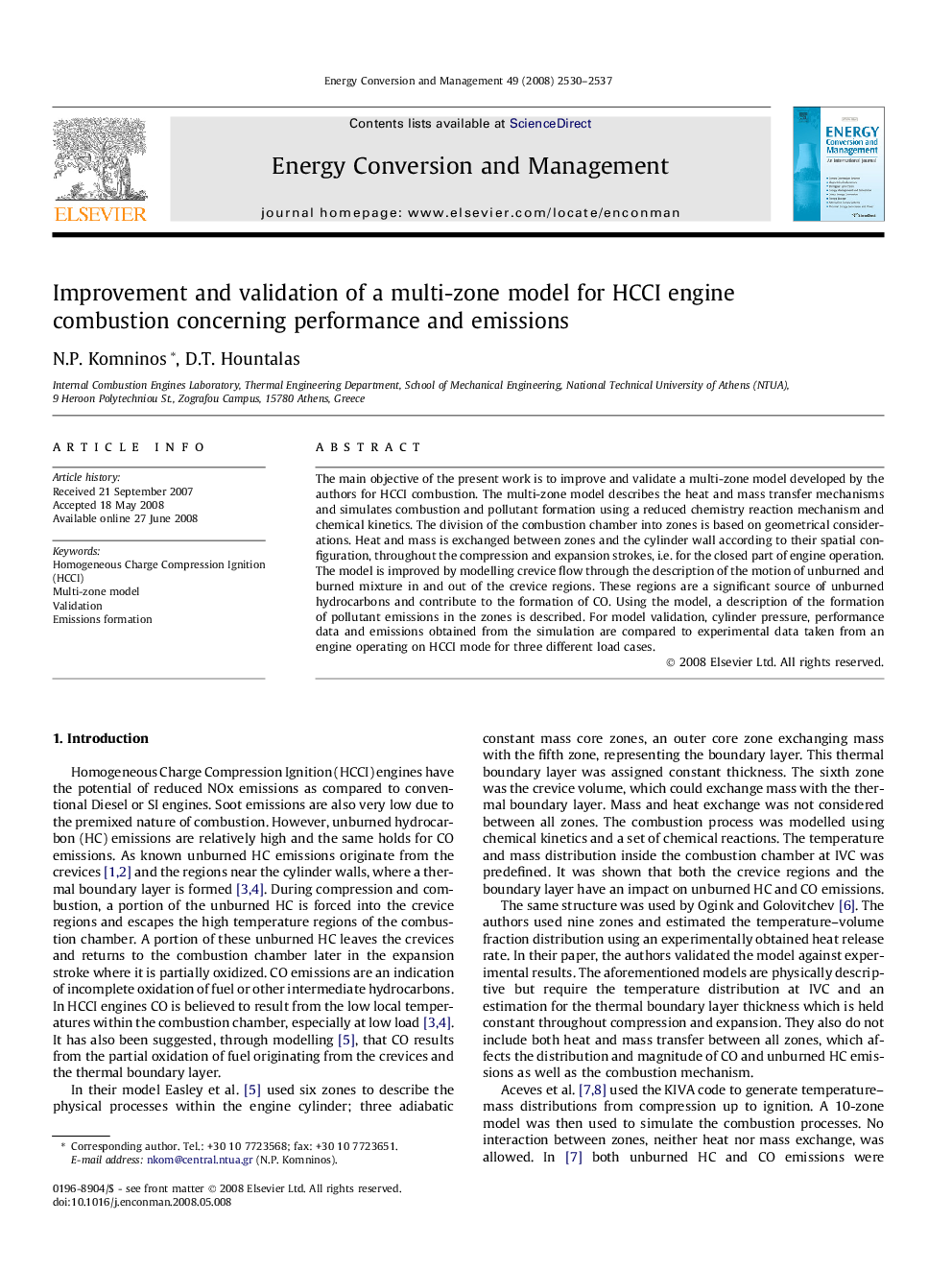| Article ID | Journal | Published Year | Pages | File Type |
|---|---|---|---|---|
| 761982 | Energy Conversion and Management | 2008 | 8 Pages |
The main objective of the present work is to improve and validate a multi-zone model developed by the authors for HCCI combustion. The multi-zone model describes the heat and mass transfer mechanisms and simulates combustion and pollutant formation using a reduced chemistry reaction mechanism and chemical kinetics. The division of the combustion chamber into zones is based on geometrical considerations. Heat and mass is exchanged between zones and the cylinder wall according to their spatial configuration, throughout the compression and expansion strokes, i.e. for the closed part of engine operation. The model is improved by modelling crevice flow through the description of the motion of unburned and burned mixture in and out of the crevice regions. These regions are a significant source of unburned hydrocarbons and contribute to the formation of CO. Using the model, a description of the formation of pollutant emissions in the zones is described. For model validation, cylinder pressure, performance data and emissions obtained from the simulation are compared to experimental data taken from an engine operating on HCCI mode for three different load cases.
